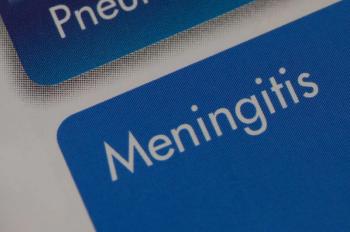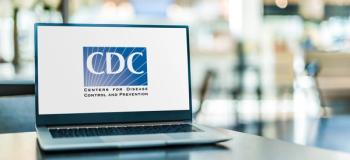
Innovative Strategies to Manage Increased Pharmacist Workload
Mitchel Rothholz, RPh, MBA, leads panelists in a conversation regarding strategies to manage increased pharmacist workload in anticipation of the coming flu season.
Episodes in this series

Mitchel Rothholz, RPh, MBA: As we’re talking with pharmacists about reinstating vaccines that got pushed to the side during COVID-19, one of the things we hear a lot of is the extra workload of that and having the time to spend to have those discussions. Are there any hints that any of you could provide our audience in terms of whether you try to do it all at once or in increments? Because we have the flu season coming up, do you try to reintroduce the flu discussion with the COVID-19 discussion? Or do you do the full gamut? What are your suggestions?
Randy McDonough, PharmD, MS, BCGP, BCPS, FAPhA: We realized that we have to make this work within our workflow. We’re a busy community pharmacy, and COVID-19 made us realize that we can do things in a different way, including how to use an appointment-based model. How do we sync our patient population so we aren’t being reactive within the workflow to patients coming in and getting medications filled whenever they need it, but rather we’re being proactive and getting them synced up with their medications and taking advantage of that appointment-based model?
We implemented technology during COVID-19 where patients can go on [the website] to schedule a vaccine appointment. That’s mandatory for us now. It’s harder for us to get things done if people are walking in. Plus, we want to make sure we have accurate information that the patient is filling out in advance so that when they come in, we’re ready to give them the vaccine.
If you set up your practice and are syncing patients up and taking advantage of the appointment-based model, having patients sign up in advance with appointments, it makes it a lot easier for the flow and you can still do quite a few vaccines. Another challenge with COVID-19 is how many patients can we safely bring into the pharmacy? How do we keep them socially distanced from one another so we aren’t passing the virus around if anybody has the virus? We were able to do increments of how many patients would come in a at a time. That’s how they would be scheduled within our system as well. If pharmacists are going to do this, they need to be organized. They need to make sure they figure out how to do it within workflow and use the technology to their advantage to make sure they can handle the flow.
Jeff Goad, PharmD, MPH: Along with the workforce too; a lot of our pharmacists were pushed toward the limit doing the increased bandwidth associated with COVID-19 vaccination. We saw that we need more personnel. We need technicians and student pharmacists giving vaccines. In California and a lot of other places, you’ve got dentists and optometrists [giving vaccines]. We need a lot of people to give the scale of vaccines that we had to do. But addressing the workforce issues within a pharmacy is critical to maintain our workforce so that people stay engaged and want to do these clinical services that they were trained to do.
John Beckner, RPh: I agree with both Jeff and Randy. Burnout is a very real issue that a lot of people are dealing with. Different pharmacies are going to have different models in terms of how to handle immunizations. One of the great benefits of medication synchronization, as Randy pointed out, is it becomes an opportunity to engage and deliver other clinical services at the medication synchronization appointment. The public has become very much used to making appointments for vaccines. But we shouldn’t lose sight of the fact that we need to make it convenient for people. If someone comes in for an influenza vaccine and they don’t have an appointment, it’s probably a good idea to try to accommodate them because they may not come back. We need to continue to make it easy and convenient for folks, while at the same time paying attention to staffing and workflow issues.
Randy McDonough, PharmD, MS, BCGP, BCPS, FAPhA: We also need to be cognizant of the safety. Back when we didn’t have appointments, you’d have lines going all the way outside the pharmacy. We have to be smart about it. We don’t deny someone if they come in, but we have to get them within the system, so we give them access to the website via tablet so they can fill out the information they need to fill out for us. We try to make it convenient for them. We do remote clinics as well, so we can go to where the patient is.
Jeff, I appreciate you talking about the workforce. We took full advantage when they came out with the EUA [Emergency Use Authorization], where technicians could be trained. Each of our technicians, by their wanting, became immunizers for us and went through the certification. Now that it has become a regulation, they continue to be immunizers for us. That added the ability for us to go to more remote clinics, to go to the site where the patients are, because we had adequate help at the pharmacy that didn’t exist before. I appreciate those comments.
Jeff Goad, PharmD, MPH: In California, we waived some regulations to allow increased ratios of student pharmacists to pharmacists for interprofessional supervision, so the physician could supervise the pharmacy student and the pharmacist could supervise the medical student. And some of these are going to stick. Hopefully a lot of these things we’ve proven that we can do safely over the last 2 years become law. There will be some silver linings to the pandemic for our ability to give vaccines through the pharmacy.
Mitchel Rothholz, RPh, MBA: At least this upcoming flu season, the PREP [Public Readiness and Emergency Preparedness] Act will still be in existence. Some of those authorities will still be there, so we won’t have to depend on the states. That’s a plus.
Transcript edited for clarity.
Newsletter
Pharmacy practice is always changing. Stay ahead of the curve with the Drug Topics newsletter and get the latest drug information, industry trends, and patient care tips.







































































































































